|
23rd June 2019
It's Sunday lunchtime at 'The Sovereigns'. Normally this would mean 50 Fathoms, but plans change unexpectedly. And when life gives to lemons, you play 'Miskatonic University: The Restricted Collection'. In Miskatonic University: The Restricted Collection all the players are 'well respected' academics who are completing for a promotion. It appears that promotion in Miskatonic University achieved by going into the university's Restricted Collection and retrieving as much knowledge as you can. 'Pretty simple', you may say? But it appears that the Restricted Collection is really scary place where bouts of insanity lurk in every aisle. Miskatonic University: The Restricted Collection is a set collecting and push your luck (Or more accurately, push you sanity.) game. What's in a game? Firstly, the game comes in a box that looks a bit like an old book and is thematically very nice for a game about a library. The lid is held shut with a magnetic latch and swings open (Yes, like a book.) Within, you will find all the necessary components. Inside you will find:
The components (And the packaging.) are pretty straightforward and contain some nicely evocative art. The individual player board is strange thing. completely superfluous to the game, but allowing the game to do a clever little visual trick, which is explained below. How's it play? The game is played over 5 rounds and is about collecting sets of cards. There are 3 different types of card types. These are all explained below. First, there's setup. Defence cards and a player board are given to each player.
Next the points cards are laid out. This done every round for all 3 rounds.
Playing a round. Gameplay is quite simple, players are faced with 2 choices in their turn. They are:
Exploring. This action is pretty simple; the active player draws a card from the library deck and deals with the consequences. As explained above their are 3 types of card that can be drawn. The drawn cards are then slotted against the player according to what type of card they are.
Completing a set. When a player completes a set - it is good, depending on which set they complete.
Getting a double. If the active player gets a double of either a grimoire fragment or a sigil piece, then heir mind temporarily snaps and they flee the library. Fleeing is bad and is explained below. Student cards are all identical so drawing a double of a student card has no effect. Defence cards. Defence cards are useful tools used to mitigate the effect of drawing unwanted doubles. Each one has a different affect. One card will allow you to skip the draw phase, another may allow to discard a card before it takes affect. Another allows you to pass it on to another player. Each card has a different affect and when it is played it is turned face down and cannot be used until turned face up again. The only way turn face down card back face-up is by completing a set of 4 student cards, or being 'expelled' from the restricted collection! Exiting the library. There are 2 ways a player will exit the library. Either of their own volition or in terror after drawing the wrong kind of double. If a player chooses to leave the restricted collection, they carry out 2 actions.
If they player is forced out of the restricted collection, they carry out 3 slightly different actions.
Play continues until all players have left or fled the restricted collection. Then the round has ended. Play progresses until all 5 rounds have been completed. Then all the points from the black, red and grey cards are tallied. The highest score, wins. Overall Miskatonic University: The Restricted Collection is actually a very simple push your luck game. your only ever have a binary choice, continue exploring or leave. The game is really about calculating risk vs reward. Is the reward worth the risk? This is always a very situational question. Staying in the library longer than other players will always net you higher points. Furthermore completing a set has a double benefit, not only does it gain you 3 points or reset a defence card. It allows you to discard that set and 'reset the meter' and gives you breathing space. And that's the cleverest thing about this game. The scoring mechanic. The fact that cards are always scored or removed, means that there's always a chance to get the maximum set score for a round. So, not only does it pay to stay in play longer during a round, the stakes get higher from round to round. Those 10 points for staying the restricted collection the longest in the final round are great and can get you back in the game if you're behind- provided you don't go bust in the meanwhile. But otherwise I found the game is a bit... well a bit 'meh'. There's nothing bad here, I don't know, it's just a bit uninspired, unexciting, unengaging.
0 Comments
22nd June 2019
Saturday night beckons and gaming at Matakishi's also beckons. On this evening we return to a tried and trusted favourite - Machi Koro. You can read my blog about it here. 15th June 2019.
Saturday is upon us, this means gaming night at Matakishi's. We played 'Space Explorers' and engine building card game about the early days of the space race. The goal of the game is to recruit scientists and specialists. They then enable you to complete available missions. The game bears some similarities to 'Splendor', but also some tweaks to differentiate it. What's in a game? Physically there's not much to Space Explorers. There are some tokens, tiles, player aids and a deck of cards.
How's it play? Like Splendor? Only joking! Well it plays a little bit like Splendor! At the start of the game some personnel cards and mission tiles are laid out. Research tokens are dealt to players as are some cards.
Points are tallied, highest score wins! There are other factors to consider, but that's a very basic outline of the rules and game flow. Overall I don't want to spend this blog comparing Space Explorers to Splendor, but in this case I think it'll be a useful comparison. In Splendor, there are essentially no bad decisions you can make, only sub-optimal decisions. Everything you do works to your benefit in one way or another, it's just a matter of how quickly or efficiently you accumulate those benefits However, in Space Explorers, decisions can have a negative consequence. For example; spending the game's currency means giving it to other players - and thus helping them out. Recruiting and placing personnel cards in the tableau can be risky. Covering up the wrong card can seriously screw you up. Splendor is a elegant simpler game to play and there's a pleasure in such simplicity of game play. But Space Explorers is trickier beast. There's more you need to think about. Which game is better? Neither. It sounds like a cop out, but both games are good in their own different ways. And I'd be happy to play either one. 11th June 2019
The 3rd and final game of gaming Tuesday at 'The Sovereigns' was Loot. You can read my thoughts about it here. 11th June 2019. Gaming Tuesday continues at 'The Sovereign' Next up is 'Hit Z Road'. Have you ever thought about what you would do during a zombie apocalypse? If your first thought was. "Well, I'd design a game about being in a zombie apocalypse!". Then this might be the game for you. Hit Z Road is designed to look like a game made by a child during an apocalypse, made from bits and pieces of other games etc. Some of these are other actual real games. So Hit Z Road is a game set inside the game you are playing. Omg! There goes the 4th wall! In Hit Z Road you play a small band of survivors travelling through a zombie infested apocalyptic landscape towards a safe haven. What's in a game? In particular the art direction of this game is superb. Many of the components are designed to look like they came from other games (some real games and some fake). The rulebook looks handwritten. There also human and zombie meeples. There are 3 different types of currency/resource in the game, (Ammo, petrol and adrenaline. These will be explained below.). The game plays homage to Fallout by using bottle caps as the different currencies and they look cool. You can't fault the production values here. How's it play? Hit Z Road is a relatively simple game. Your band of survivors travel from left to right dealing with the obstacles encountered. There are basically 3 phases in a round. Routes
Auctioning
Travel
And that's pretty much it for the rules. The game continues until all the encounters have been played and dealt with. Upon which any remaining survivors reach their destination and points are Points are earned in a few ways.
The player with the most points wins. Overall Hit Z Road is a fairly simply game (Which is not necessarily a bad thing.) that will give players a couple of meaningful choices to make every turn - which is a good thing. A bad choice of route can cost a lot of resources. But the game's problem is the auctioning mechanic, to reiterate: During the auctioning phase, players bid to create a turn order in which to choose which route to take. Everybody who make a bid, must pay for the bid they made. Thus it's not a good idea to to try and 'run up' another player's bid, (because your own bid and cost would almost be as high.). The problem here is 2-fold. Firstly, the player with the most resources can always go first. This means that they can always have the choice of the most optimal route which will gain them the the most (Or lose them the least.) resources. The remaining players will be bidding (And spending resources.) over the remaining sub-optimal routes which are less beneficial. Essentially, they'll end bidding over the scraps. Secondly, when most of the players have either spend too many resources or realised they can't bid against the player with the most resources. Then they'll stop bidding. And when no one bids, the turn order does not change. This means that the dominant player doesn't even need to spend any resources to stay first or continue dominating. The results of this is that all the players bar one will be put on to the back foot and will find it very hard to get off it. This ruins the game. I know why it was done - they didn't want auctioning reduced to 'Auction winner goes first, play proceeds to the left'. But still, it ruins the game. I've looked online and found I'm not the only person who thinks so. I've seen that this is called a 'Runaway Leader' problem. This is the harshest I've been about a game in this blog. I've played games I didn't like or care for. But I consider this to be a bad game, no two ways about it. In the end I look at the game's excellent production values and can't help but think. 'Maybe the designers got their priorities mixed up.'. 11th June 2019. Tuesday is here and we find ourselves at 'The Sovereigns' in Woking for Tuesday night gaming. Whilst waiting for other people to turn up we decide to play a quick opener. This quick opener is 'Deep Sea Adventure'. Originally my initial post about Deep Sea adventure was published as part of a blog post about a different game. So I am going to re-post my thoughts about Deep Sea Adventure below. in Deep Sea Adventure each player is a treasure-hunting diver who is looking to score big. The game is played over 3 rounds and the player with the most valuable treasures after the end of the 3rd round is the winner. Deep Sea Adventure packs a whole lot of push-your-luck fun into a little box. Whilst this is a competitive game, it sneaks a co-operative little mechanic into the rules which in turn players can try to twist to their own advantage. The game begins with all the players' meeples in a submarine. Beneath the sub is a winding trail of face down markers. Each marker represents a treasure that can be collected by a diver. The value of the treasures also vary, but the deeper you dive, more valuable the treasure. The more sides a marker has, the more potential value it has. Play goes like this:
And that's it, that's it for the rules. Ok, there's a bit more.
And that really is it for the rules. Deep Sea Adventure is all about pushing you luck. Pushing your luck in picking up treasures (so tempting to pick up one extra treasure, just one little treasure - it won't make much of a difference, right). Pushing your luck in movement. The hop mechanic can prove helpful or can push you way too deep into the depths. Finally, pushing your luck with the communal oxygen supply. This is the game's best mechanic. This is what turns it from a 'OK' game into a 'good' game. The communal oxygen means that you have watch what the other players are picking up. It forces you to try and think a whole round ahead. When playing Deep Sea Adventure, there comes a point when oxygen starts to matter. For a couple of turns, no one picks up treasure. Everyone wants something a little better and is willing to dive a little deeper to get it. But then, it all changes, as treasures are picked up, oxygen is used up. The change may seem quite subtle, but can actually be quite dramatic. No oxygen being used, to suddenly 4-5 every round. Being able to spot and react to this change is key to winning in my opinion. In a six player game, at some point every player will have picked up at least one treasure, that means six points of oxygen will be used up before your next turn. That's about a quarter of all the available oxygen. Some players will try and load themselves with treasures to burn up oxygen as they return to the sub, (this is in itself a risky strategy as it also slows movement - several times I've seen loaded down players one or 2 spaces away from the sub and not move at all until the oxygen runs out). All of this means that you can never be complacent about the oxygen supply and this Deep Sea Adventure is good fun and a good game. 8th June 2019
Saturday night continues at Matakishi's. The Oubilette campaign had finished and we immediately moved on to a new campaign. Agon is an RPG set in mythic Greece. It's a little unusual in its execution with some intriguing rules. It also marries together co-operative and competitive game play. I won't go into more detail as this isn't about Agon, it's about Agon d6. A week previously Matakishi had encountered a variation of the 'Freeform Universal' (FU) 'Yes, But' RPG. After a week of kit-bashing, Agon d6 was spawned. The lovechild of Agon and a 'Yes But' system. We created our characters and began session one. You can read Matakishi's post about it here. 8th June 2019
Saturday is here and it's the evening. So it's game time at Matakishi's. It's the conclusion of our play testing of 'The Black Hack' campaign, 'Oubilette. I think by now that Matakishi had become fatigued by the whole campaign and pushed through to the conclusion rapidly. You can read his thoughts about it here. 4th June 2019 Tuesday night and it's game time at 'The Sovereigns' in Woking with the board game club. Does the idea of game about slowly growing trees excite you? If the answer is yes, then Photosynthesis is the game for you! What's in a game? All of the components of photosynthesis are made from card. All of the of the tokens, even the trees. There are no plastic meeples or soulless wooden cubes here. And even though this is the case, they are still good components. When a bunch of trees are all on the playing board. It looks impressive. In photosynthesis there is a main playing board and a sun marker to indicate the direction of the sunlight. Additionally, each player has their own board that contains most of the seeds and trees needed to play the game. Players also start with some seeds and trees that are not on the player board that are 'available' to use. There is an important difference between the two that will explained a little further down. How's it play? The premise of Photosynthesis is to plant seeds, grow the seeds until they become the largest possible trees and then score points from those trees. In a normal game, play continues until the sun has completed 3 revolutions of the board. It takes 6 rounds to complete 1 revolution. Thus players each have a total of 18 turns to win the game. Each round consists of 2 phases. Phase one.
So now that all the players have calculated their light points, play proceeds to the next phase. Phase two.
That's it for the basic rules. There are, however a few other rules to remember which are very important.
All of these rules basically serve one purpose - to slow the game down. And that makes complete sense, this is a game about growing trees after all. It forces players to think a few turns ahead. It takes time to score points. A tree can only score points when it is a 'large' size. It takes 4 actions to plant a seed and then go to a small, medium and large tree. Then it takes a 5th action to score it. Furthermore it will take more actions and light points to 'buy' the seed and 3 different sized trees from the player board in order to do this. Overall
Photosynthesis is a peculiar beast: It's a little bit like a worker placement game with trees earning light points from their positioning and it's a little bit like an area control game, where larger trees will shut out surrounding smaller ones. It's simple to learn but forces players to adopt a 'ent-like' mentality towards the games varied choices, strategies and occasional hard decisions. It's slow place means players cannot burn light point to do one thing quickly. Sometimes it's possible to speed events by sacrificing seeds or trees, but this can be tricky choice as it's permanent. I'm sure there are ties when it is prudent to do so. But slow and steady, that's the way to go. I think all of this good and makes for a good game. I'm sure Treebeard would agree! 1st June 2019
Saturday as rolled around and we're blighted by a gaming drought. There's no weekend RPGs at 'The Sovereigns' and no evening gaming at Matakishi's. 3 of did manage to meet up for a game of Wingspan at The Sovereigns though. You can read my thoughts about it here. |
AuthorI play, I paint. Archives
March 2024
Categories
All
|

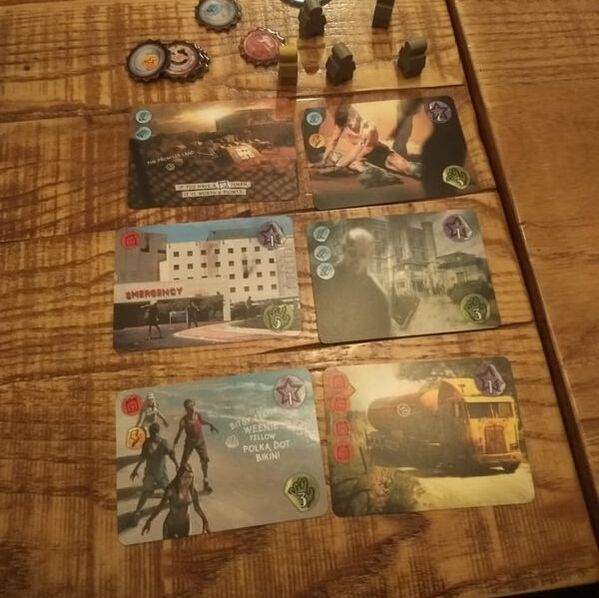
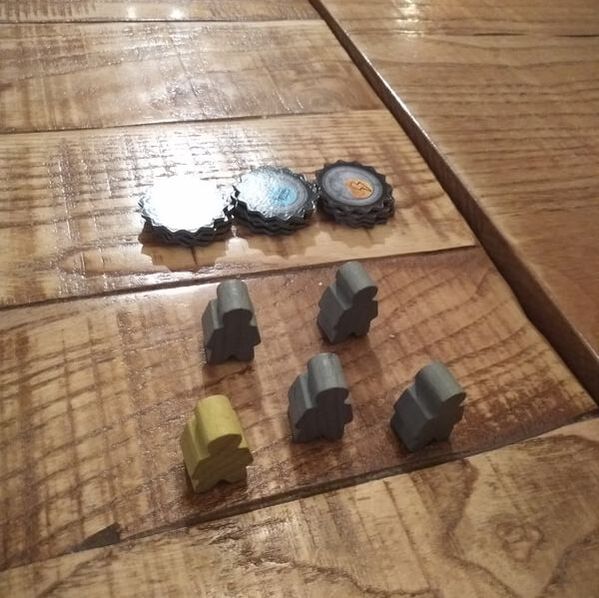
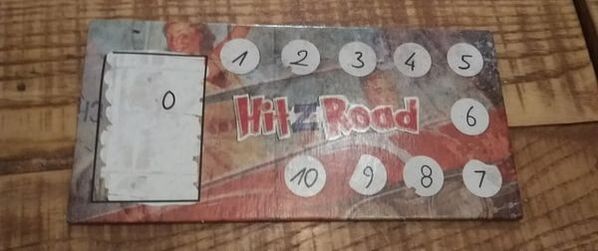
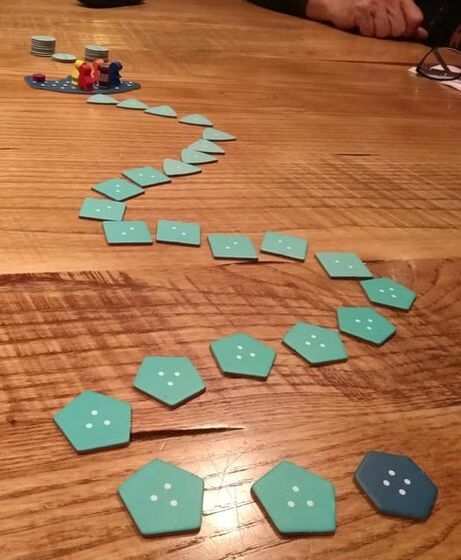
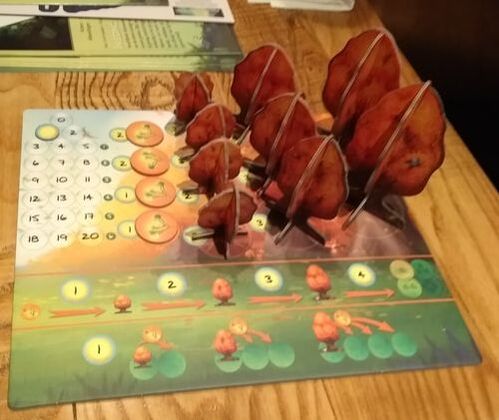
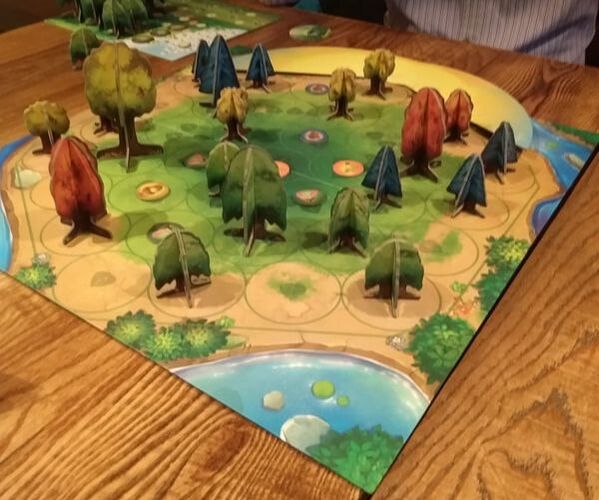
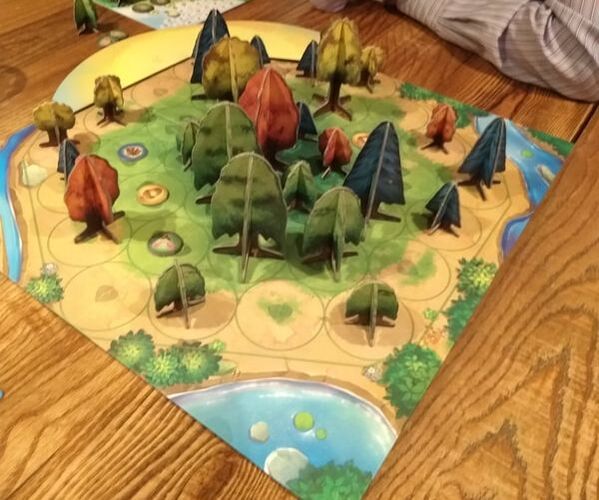
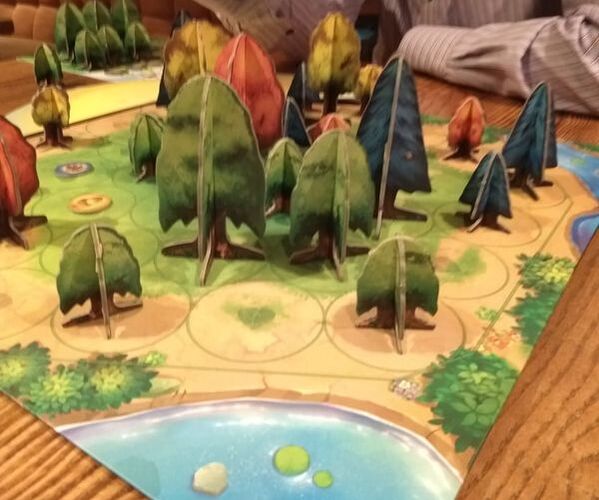
 RSS Feed
RSS Feed
